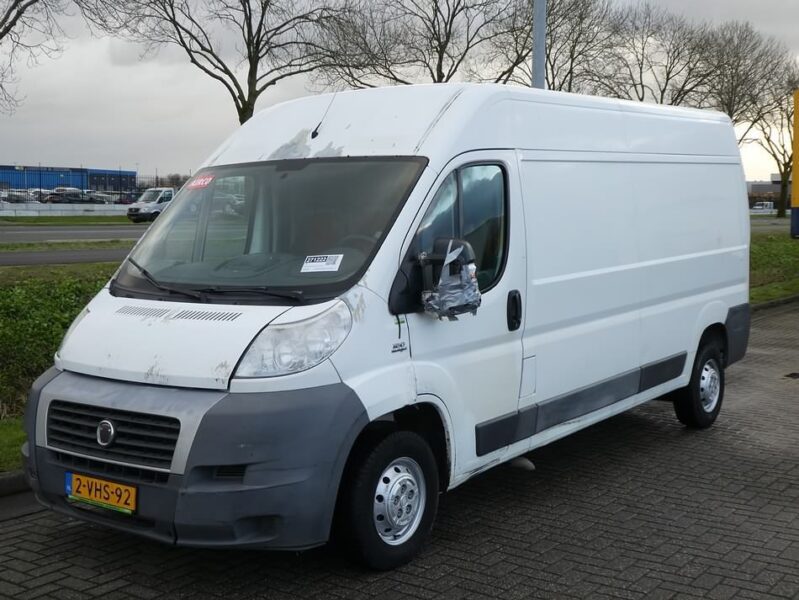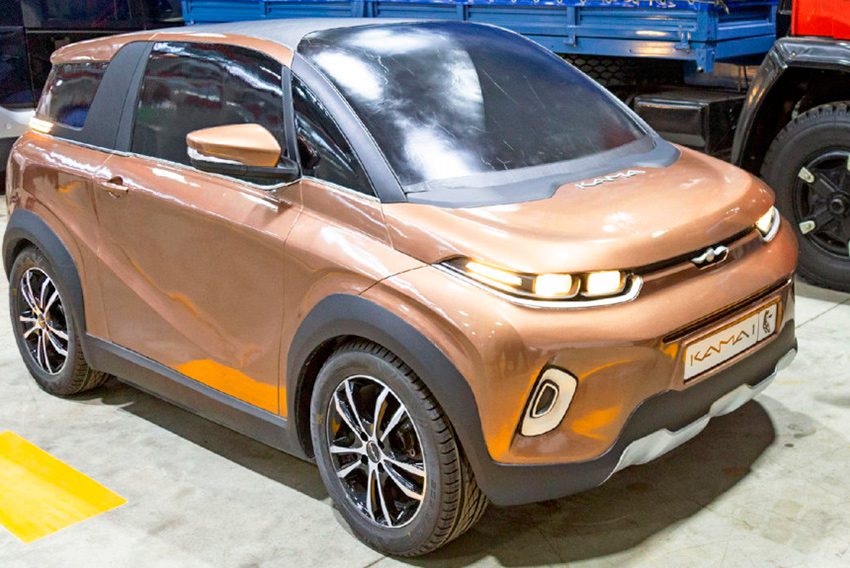
Fiat Ducato JTD 2.3
The reason the new Boxer and Jumper first came to us is actually because Fiat kept supplying their new Ducats to motorhome conversion companies, as everyone knows that Ducato is “the law” among campers. In Europe, among the three bases for the modernization of the van, Ducato is used in two cases. It's clear where Fiat's light van division sees the money. And there is nothing wrong with that.
When I drove the new Ducati behind an old and half-emaciated first-generation car (also red) from the second half of the XNUMXs, I had the feeling that I would easily park the old one in the cargo hold of a modern car. ... The difference is really huge. Both in form and in execution. But such a comparison is meaningless, just a glimpse of romance for some master.
The new Ducat is no different from the previous generation, which, by the way, appeared in 2002, since it is also made in collaboration with the PSA Peugeot Citroën group, which means three very similar products - Boxer, Ducat and Jumper. And the fact that the two groups did not sleep, but only copied, is evidenced by the fact that the new Ducato, compared to the old one, which is not even that old, took only three percent of the parts.
It looks completely different, as much as an unloading van can be. At the front, there is a huge black bumper with a silver bezel. The headlights are twisted all the way to the edge, and the hood is almost ridiculously small. At the rear, the designers had less hands free due to the more important role of functionality, so it is worth mentioning only a different position and a different shape of the taillights. The sides are usually wagons, and in the case of the test Ducat they were awfully long. If the test Ducato were just two millimeters longer, it would be a full six meters. Next to him, the metered wagons usually look like docile sheep.
The PLH2 test mark means 4.035 millimeters between axles and a good two and a half meters in height. Ducat vans are sold with three wheelbases (3.000 mm, 3.450 mm, 4.035 mm and 4.035 mm with overhang), three roof heights (model H1 with 2.254 mm, H2 with 2.524 mm and H3 with 2.764 mm), four lengths ( 4.963 mm). , 5.412 mm, 5.998 mm and 6.363) with seven different cargo volumes and three tailgate sizes.
Ours was not the longest and largest, but in testing it was large enough to easily move a furniture warehouse. There were few problems with maneuvering, as the 14m turning circle is not among the smaller ones, and the Ducat's biggest obstacle in testing was its transparency. The rear should be looked after with rear view mirrors that weren't electrically adjustable (many people in the van world don't miss them, but they're very welcome with regular driver changes) and engineers have now included turn signals in them (following the example of the passenger car world). ). All is well, but from people for whom the vans are “service”, we have already heard accusations that the side mirrors are a “consumable”, and with turn signals in them, repairs are even more expensive.
The test Ducato measures over two meters wide, so such claims (which also fly on Jumper, Boxer, Volkswagen Crafter ...) don't even come from the vine. In addition to a pair of rear doors (which open 90 degrees and another 90 degrees with the push of a button) Ducato also has a side sliding door that allows for easy loading and unloading of a large cargo area, the bottom part which is not completely bare, but protected by a panel, everywhere , on the floor and on the walls, it is full of anchorages to which we can tie a load that otherwise, if lighter, could move through the cargo area.
In the test case, it was separated from the passenger compartment by a wall with a window (which could be half-opened, like in a taxi), for which Fiat asks for an additional 59.431 1 SIT. Otherwise, access to the cargo area will be as easy and simple as in the case of a cargo van. There is enough room in height for adults at around 8 meters to easily get around the cargo area, which is the added fact that such a Ducato is more than suitable for reworking into a living room.
In front, in the cabin, there is enough space for three people in two places. The rider will feel best when sitting in the best (best sprung, most comfortable and best adjustable) seat that has been supported at the lumbar in the test ducat by an additional 18.548 60 SIT and equipped with elbow support. The range of allowances on the test Dukat was quite rich: almost 132 thousand for a two-seater bench in the cabin, 8.387 thousand (or rather Tolar) for metallic body paint, 299.550 SIT for mandatory equipment, 4.417 SIT. for manual air conditioning – XNUMX XNUMX SIT for carpets, plus the aforementioned driver’s seat and baffle adjustment feature.
In Ducati, it stands upright, and the view in front of the steering wheel does not resemble Ducat's "truck" mission, but some personal Fiat, since the Ducato has very decent gauges and a whole dashboard. He is also close to his personal siblings because of his purely "real" trip computer, which is very similar to the one in the Grande Punto. There is plenty of storage here, including a large drawer in the middle of the dashboard that can also be locked.
In Dukat, there are no problems with the disposal of documents, bottles and other trifles, as well as management. The buttons are almost all within reach, only the socket and cigarette lighter are completely on the passenger side. Just like a trash can. The instrument panel is of course plastic, on the test model we were a little disappointed with the workmanship. Yes, the Ducato is a camper, but the drawer lines could have been better hit...
The six-speed manual shift lever is classically raised and close to the steering wheel, so favorable engine power can be found at hand, which in this Dukat came from a 2-litre 3-kilowatt (88 hp) turbodiesel that is fully "muscular", solidly endowed. With this engine, the Ducato is not a racer, you won't buy the fastest “horse” for its locomotion service (they also have more powerful engines for that), but a very useful package that can easily carry up to 120kg of cargo. (the maximum load capacity of this Ducato) and satisfied with the maximum torque of 1.450 Nm at 320 rpm.
The advantages of the engine are ease of use (quite solid in the lower rev range) and economy, you just need to get used to the regular use of the gear lever. By the way, this one is pretty close, and the mechanisms are solid, although sometimes harsh, but what else can you give a van, a gold watch with a fountain? About the sound of the engine, just enough to make it noticeable, but also about which car is louder! The chassis matches the purpose of the van and allows (if the load is "out") to turn quickly. It just needs a lot of space, and passengers in the cabin have to think about supporting their outboard seats.
Every time we find that vans from generation to generation are more like cars. Such a Ducato wants to avoid this philosophy because of its size and, as a result, ease of use, but it is enough to know that this is a delivery truck that is always ready to transport something. Here and there.
Half of Rhubarb
Photo: Sasha Kapetanovich.
Fiat Ducato JTD 2.3
Basic data
Technical information
| engine: | 4-cylinder - 4-stroke - in-line - direct injection turbodiesel - displacement 2287 cm3 - maximum power 88 kW (120 hp) at 3600 rpm - maximum torque 320 Nm at 2000 rpm. |
|---|---|
| Energy transfer: | front wheel drive engine - 6-speed manual transmission - tires 215/70 R 15 C (Michelin Agilis Snow-Ice (M + S)). |
| Capacity: | top speed 150 km/h - 0-100 km/h acceleration n.a. - fuel consumption (ECE) n.a. |
| Mass: | empty vehicle 2050 kg - permissible gross weight 3500 kg. |
| External dimensions: | length 5998 mm - width 2050 mm - height 2522 mm - trunk 13 m3 - fuel tank 90 l. |
Our measurements
| (T = 8 ° C / p = 1024 mbar / relative temperature: 71% / meter reading: 1092 km) | |
| Acceleration 0-100km: | 15,2s |
|---|---|
| 402m from the city: | 19,4 years ( 112 km / h) |
| 1000m from the city: | 36,5 years ( 136 km / h) |
| Flexibility 50-90km / h: | 8,8 / 12,9s |
| Flexibility 80-120km / h: | 17,6 / 16,6s |
| Maximum speed: | 151km / h (WE.) |
| test consumption: | 10,8 l / 100km |
| Braking distance at 100 km / h: | 47,4m |
| AM table: | 45m |
evaluation
As a camper van or as a base for a motorhome. In both cases, the engine is powerful enough to move whatever is loaded on it. In general, the picture is excellent, the cons can become history overnight. Unless the sight of the curved lines of the box gets on your nerves ...
We praise and reproach
engine
fuel consumption
Appearance
large cargo space
on-board computer
workmanship
without PDC system
turn signal in the mirror
